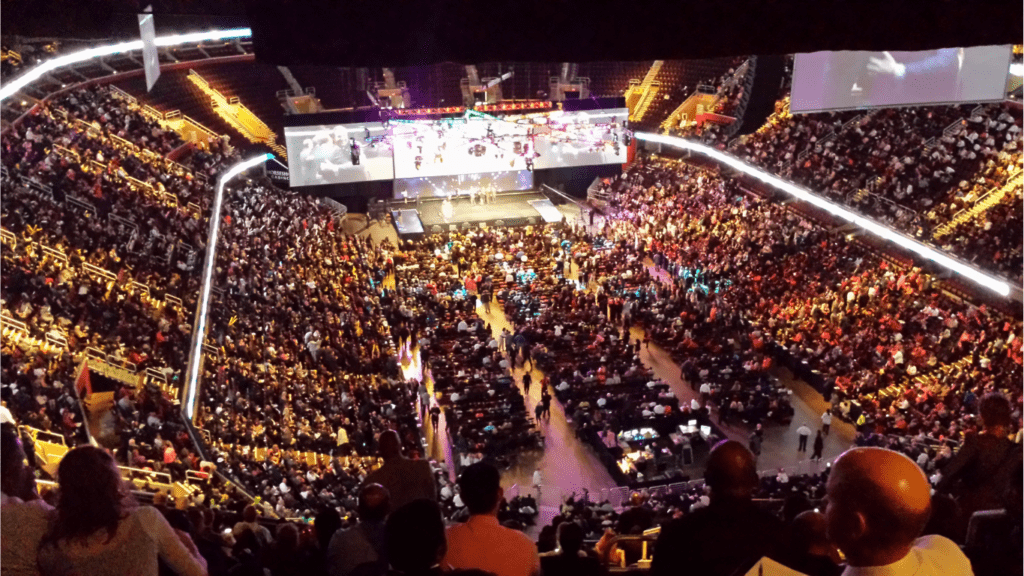The Rise of Esports: Early Beginnings and Key Moments
The Origins and Early Competitions
Competitive gaming started in the 1970s with university students.
The first known esports competition occurred in 1972 at Stanford University, where participants played “Spacewar” for a year-long subscription to Rolling Stone magazine.
By the 1980s, arcade games like “Space Invaders” and “Pac-Man” made headway, expanding the competitive scene.
These tournaments attracted significant audience interest and media coverage, marking the dawn of organized esports.
Milestones in Esports Evolution
In 1990, the Nintendo World Championships became a pivotal moment in esports history.
Held across 29 cities in the United States, it paved the way for future large-scale events.
The 1997 Cyberathlete Professional League (CPL) introduced professional standards to competitive gaming, leading to the formalization of esports teams and players.
The early 2000s saw the foundation of Major League Gaming (MLG) in 2002, which further professionalized the scene.
Digital platforms like Twitch (established in 2011) revolutionized viewership, giving rise to a global audience.
In 2013, “League of Legends” World Championship garnered a peak viewership of 32 million, establishing esports as a mainstream entertainment form.
By the mid-2010s, esports garnered corporate sponsorships, broadcast rights deals, and significant prize pools.
Events like “The International” and the “Overwatch League” epitomized the commercial success and cultural impact of esports on society.
Factors Driving the Popularity of Esports
Technological Advancements
Cutting-edge technology has played a crucial role in the rise of esports.
High-speed internet and advancements in gaming hardware, including powerful GPUs and faster processors, have enabled seamless gaming experiences.
Virtual reality (VR) and augmented reality (AR) offer immersive gameplay, while streaming platforms like Twitch let players broadcast live, fostering a global audience.
Investments in cloud gaming, particularly by companies like Google and Microsoft, remove hardware limitations, broadening access to high-quality games.
Online multiplayer modes and robust matchmaking systems facilitate community-building, making esports more engaging and inclusive.
Growth in Viewer Engagement
Enhanced viewer engagement has been pivotal for esports’ growth.
Interactive platforms like Twitch and YouTube Gaming let fans interact with streamers and fellow viewers, creating an active and invested community.
Esports organizations invest heavily in content creation, delivering behind-the-scenes footage, player interviews, and various series that deepen fan investment.
Platforms also offer real-time statistics and in-game insights, keeping viewers informed and engaged.
Social media amplification by influencers and celebrities extends reach, while high-profile tournaments provide excitement and drama, increasing audience retention.
Major Esports Games and Their Impact
Titles That Shaped the Industry
Several games have had a significant impact on the development of the esports industry.
- “StarCraft,” released in 1998, laid the foundation for competitive gaming, especially in South Korea, where it became a cultural phenomenon.
- “Counter-Strike,” launched in 2000, has been a staple in first-person shooter esports due to its strategic depth and team-based gameplay.
- “League of Legends,” introduced in 2009, revolutionized multiplayer online battle arena (MOBA) games by combining accessibility with competitive integrity.
- “Riot Games,” the developer, established the League Championship Series, solidifying its place in esports.
- “Dota 2,” which emerged in 2013, elevated prize pools to unprecedented levels with events like “The International” consistently awarding millions of dollars, supported by its crowdfunding model.
- “Fortnite,” released in 2017, diversified the esports landscape with its unique mix of building mechanics and battle royale format, attracting a younger audience.
Epic Games’ organization of events such as the Fortnite World Cup has further expanded esports’ demographic reach.
Case Study: The Transition of a Game to a Competitive Sport
“Overwatch” exemplifies the transition from a popular game to a competitive sport.
Launched by Blizzard Entertainment in 2016, it quickly gained a dedicated player base.
The developer recognized the potential for competitive play and initiated the Overwatch League (OWL) in 2018, implementing a city-based franchise model similar to traditional sports leagues.
The existence of structured seasons, team branding, and professional player contracts transformed “Overwatch” into a bona fide spectator sport.
Viewership numbers soared, with peak concurrent viewers reaching 437,000 during the Grand Finals of the inaugural season.
This model has set a precedent for other games seeking to enter the esports domain, illustrating the viability of esports as a mainstream entertainment option.
Blizzard’s constant updates and balancing efforts ensured the game’s competitive integrity.
The integration of sponsors, partnerships, and broadcast rights deals enhanced the league’s financial stability.
OWL’s success demonstrates how strategic planning and investment can facilitate a game’s evolution from a pastime to a competitive sport.
Esports Infrastructure: Organizations and Arenas

Development of Professional Teams
Professional esports teams serve as the backbone of the competitive gaming scene.
Organizations such as:
- Fnatic
- TSM
- Cloud9
have achieved household name status within the gaming community.
These teams scout top talent from around the globe, offering contracts that include salaries, benefits, and performance incentives.
They participate in various tournaments, competing in popular titles like:
- League of Legends
- Counter-Strike: Global Offensive
- Dota 2″
In addition to financial backing, professional teams invest in state-of-the-art training facilities.
These facilities often include high-performance computing setups, dedicated coaching staffs, and wellness programs.
Performance analysis, mental health support, and media training ensure that players can perform at their best.
Expansion of Dedicated Esports Venues
Dedicated esports venues have emerged as essential infrastructure for the industry.
Purpose-built arenas, like the HyperX Esports Arena in Las Vegas and the Esports Stadium Arlington in Texas, offer cutting-edge technology and seating for thousands of spectators.
These venues host events ranging from small tournaments to multi-day championships, providing fans with immersive experiences.
Esports arenas feature high-speed internet, multiple screens for live broadcasting, and advanced audio-visual setups.
Some venues even include spaces for fan interactions, merchandise stores, and dining options.
These facilities not only serve local audiences but also attract international visitors, contributing to local economies.
In recent years, the trend of integrating esports venues into larger entertainment complexes has gained traction.
Examples include the Fusion Arena in Philadelphia, which is part of a broader development project featuring retail and dining establishments.
This integration emphasizes the growing mainstream appeal of esports, aligning it with traditional entertainment sectors.
By building a robust infrastructure that includes professional teams and dedicated venues, esports cements its status as a mainstream phenomenon.
The Future of Esports
Emerging Trends and Predictions
Esports continues to gain momentum, showing promising trends that’ll shape its future. One key trend is mobile gaming. Games like “PUBG Mobile” and “Free Fire” are attracting a massive audience.
The accessibility of smartphones means the potential audience for mobile esports exceeds that of PC or console gaming.
Another trend is the use of Augmented Reality (AR) and Virtual Reality (VR). These technologies offer immersive experiences, making games more engaging and spectator-friendly.
For example, “Beat Saber” has popularized VR gaming, and this trend is likely to continue.
Streaming platforms are also evolving. Innovations in live streaming, such as interactive features and real-time stats, enhance viewer engagement.
Platforms like Twitch and YouTube Gaming add features to keep audiences involved.
Sponsorships and partnerships are expanding. Traditional sports teams and global brands are increasingly investing in esports.
Significant deals with companies like Coca-Cola and Nike validate esports’ commercial viability.
Potential Challenges and Opportunities
Esports faces several challenges that could impact its growth. One major issue is regulation.
The industry lacks a unified governing body, which makes standardized rules and practices difficult to implement.
Addressing this could streamline operations and boost credibility.
Player health is another concern. Intensive gaming schedules lead to physical and mental health issues.
Organizations need to prioritize player well-being through better training regimens and mental health support.
Monetization remains an ongoing challenge.
While viewership numbers are high, converting these metrics into consistent revenue streams is complex.
Innovations in advertising, subscription models, and microtransactions present opportunities for growth.
Education and career pathways in esports are evolving.
Educational institutions offer specialized programs, and more career opportunities are available beyond just playing.
Roles in management, coaching, and content creation are becoming viable options, enhancing the ecosystem’s sustainability.
To conclude, esports’ future appears robust, marked by emerging trends and opportunities.
However, addressing challenges like regulation and player health will be critical for sustainable growth.


 Darcy Cazaly is a key contributor at Infinity Game Saga, where he brings his expertise to the world of gaming journalism. As a dedicated member of the team, Darcy focuses on delivering in-depth articles and insightful analyses that cover a broad range of topics within the gaming industry. His work includes exploring the latest trends, dissecting game mechanics, and providing thorough reviews of new releases.
Darcy's commitment to high-quality content ensures that readers receive accurate and engaging information about the evolving gaming landscape. His writing not only informs but also enriches the gaming experience for the community, offering valuable perspectives and up-to-date news. Through his contributions, Darcy helps bridge the gap between gamers and the dynamic world of gaming technology and trends, making him an essential part of the Infinity Game Saga team.
Darcy Cazaly is a key contributor at Infinity Game Saga, where he brings his expertise to the world of gaming journalism. As a dedicated member of the team, Darcy focuses on delivering in-depth articles and insightful analyses that cover a broad range of topics within the gaming industry. His work includes exploring the latest trends, dissecting game mechanics, and providing thorough reviews of new releases.
Darcy's commitment to high-quality content ensures that readers receive accurate and engaging information about the evolving gaming landscape. His writing not only informs but also enriches the gaming experience for the community, offering valuable perspectives and up-to-date news. Through his contributions, Darcy helps bridge the gap between gamers and the dynamic world of gaming technology and trends, making him an essential part of the Infinity Game Saga team.
